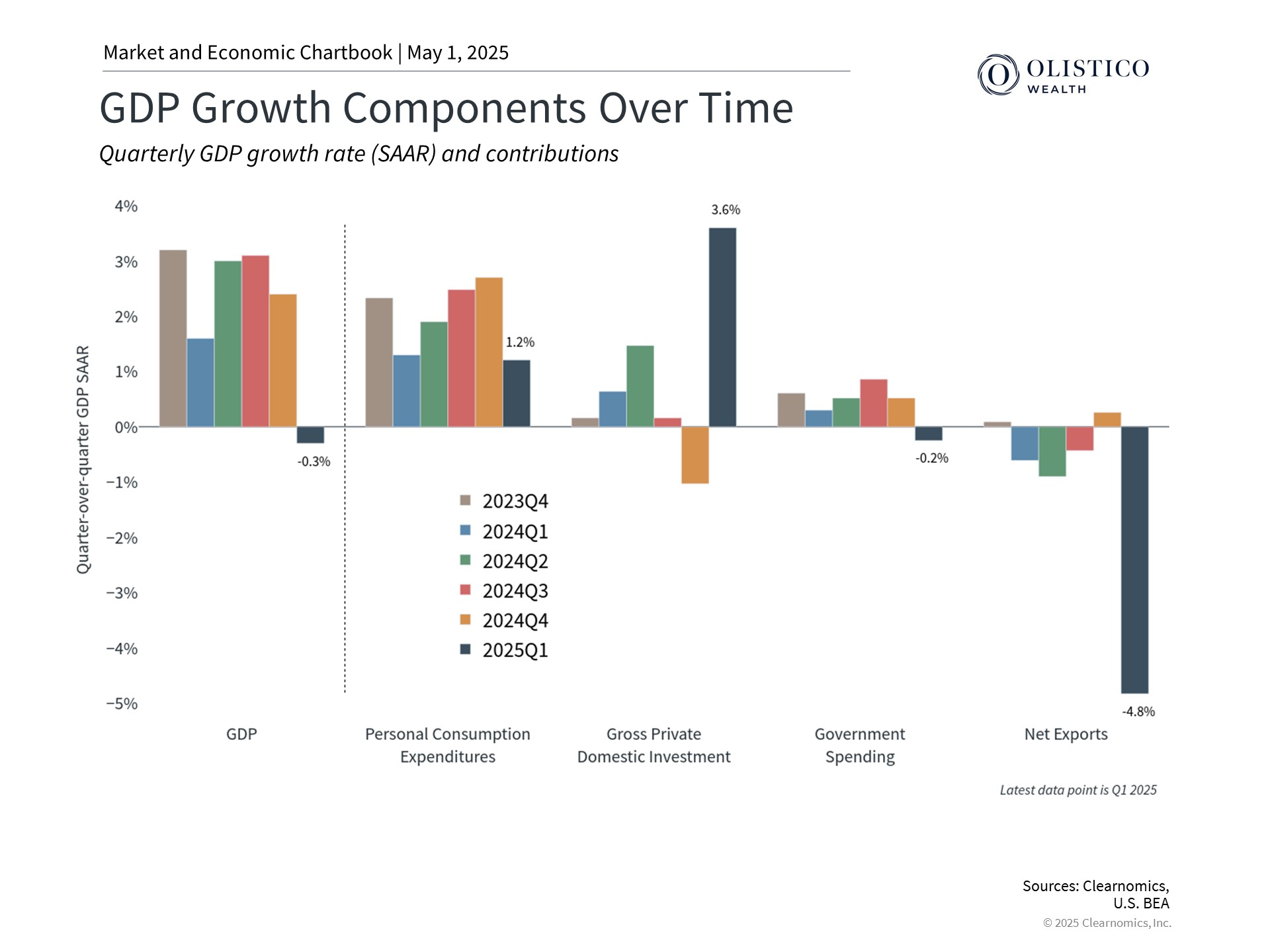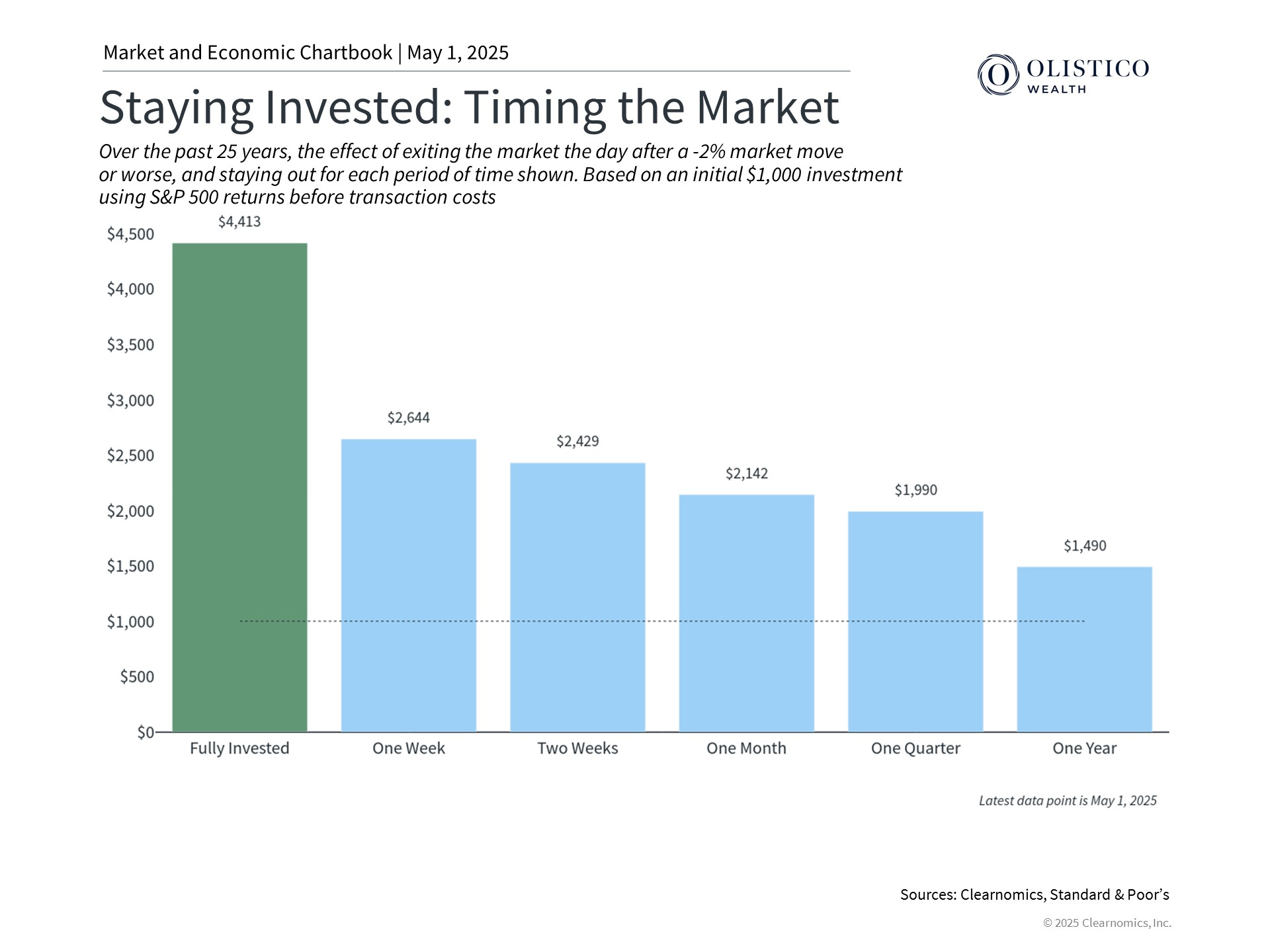April 2025 marked one of the most volatile periods in market history following new tariff announcements. Despite the S&P 500 experiencing a 12% intramonth decline, it recovered to close within one percent of its starting point. Economic data revealed a slight contraction in Q1, largely due to companies stockpiling imported goods ahead of tariff implementation. While volatility affected multiple asset classes, both bonds and international stocks contributed positively to diversified portfolios, reinforcing the value of maintaining a balanced investment approach during uncertain times.
Key Market and Economic Highlights
- The S&P 500 fell 0.8% in April, the Dow Jones Industrial Average fell 3.2%, and the Nasdaq rose 0.9%. Year-to-date, the S&P 500 has declined 5.3%, the Dow 4.4%, and the Nasdaq 9.7%.
- The Bloomberg U.S. Aggregate Bond index gained 0.4% in April and is up 3.2% year-to-date. The 10-year Treasury yield ended at 4.16% after fluctuating between 3.99% and 4.49%.
- The U.S. dollar index fell 4.5% to 99.5, a three-year low.
- The Consumer Price Index rose 2.4% in March year-over-year, below expectations.
- GDP contracted 0.3% in Q1, primarily driven by increased import activity.
Market resilience amid April’s dramatic swings
Volatility spiked then stabilized in April’s trading

April began with unexpected White House tariff announcements affecting nearly all trading partners, triggering sharp market declines. However, the subsequent implementation of a 90-day pause for most countries and exemptions on certain Chinese technology products helped markets recover. Despite significant intramonth volatility, major indices closed with relatively modest changes, while diversified portfolios benefited from bond returns and international stock rallies.
The VIX index briefly exceeded 50 for the first time since the pandemic, highlighting extreme market uncertainty. Many large daily declines were followed by significant rebounds, demonstrating why attempting to time market swings often proves counterproductive. While conditions have somewhat stabilized, investors should expect ongoing volatility as trade policy developments continue to unfold.
Economic contraction reflects trade policy impacts

First quarter GDP declined by 0.3%, the first contraction since early 2022, primarily due to businesses accelerating imports ahead of tariff implementation. While consumer spending slowed, it remained positive. Recent consumer surveys indicate expectations for accelerated prices, resulting in historically low confidence levels, though this hasn’t yet significantly impacted spending patterns or inflation metrics.
The Federal Reserve faces complex decisions amid this mixed economic picture. With its independence briefly questioned by the White House, market uncertainty increased further. Currently, markets anticipate approximately four rate cuts this year, potentially beginning in July. Bond markets experienced unusual volatility but ended the month near starting levels, with the 10-year Treasury yield closing at 4.16%.
Long-term investment discipline remains critical

During volatile periods, the principle of maintaining long-term investment discipline becomes even more important. Historical data demonstrates the potential costs of attempting to time markets after significant declines. Since positive and negative trading days often occur unpredictably, exiting positions after downturns can significantly impact returns over time.
While increased volatility may be unsettling, it often creates attractive valuations across asset classes, providing opportunities for portfolio diversification. The S&P 500’s price-to-earnings ratio has improved considerably this year, potentially offering more favorable entry points for disciplined investors.
The bottom line? April’s market volatility serves as a powerful reminder that significant market swings can occur without warning. History consistently shows that investors who maintain discipline and focus on long-term financial plans are better positioned to achieve their goals.